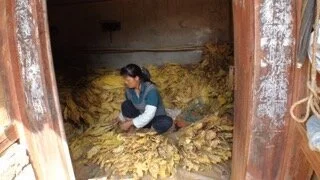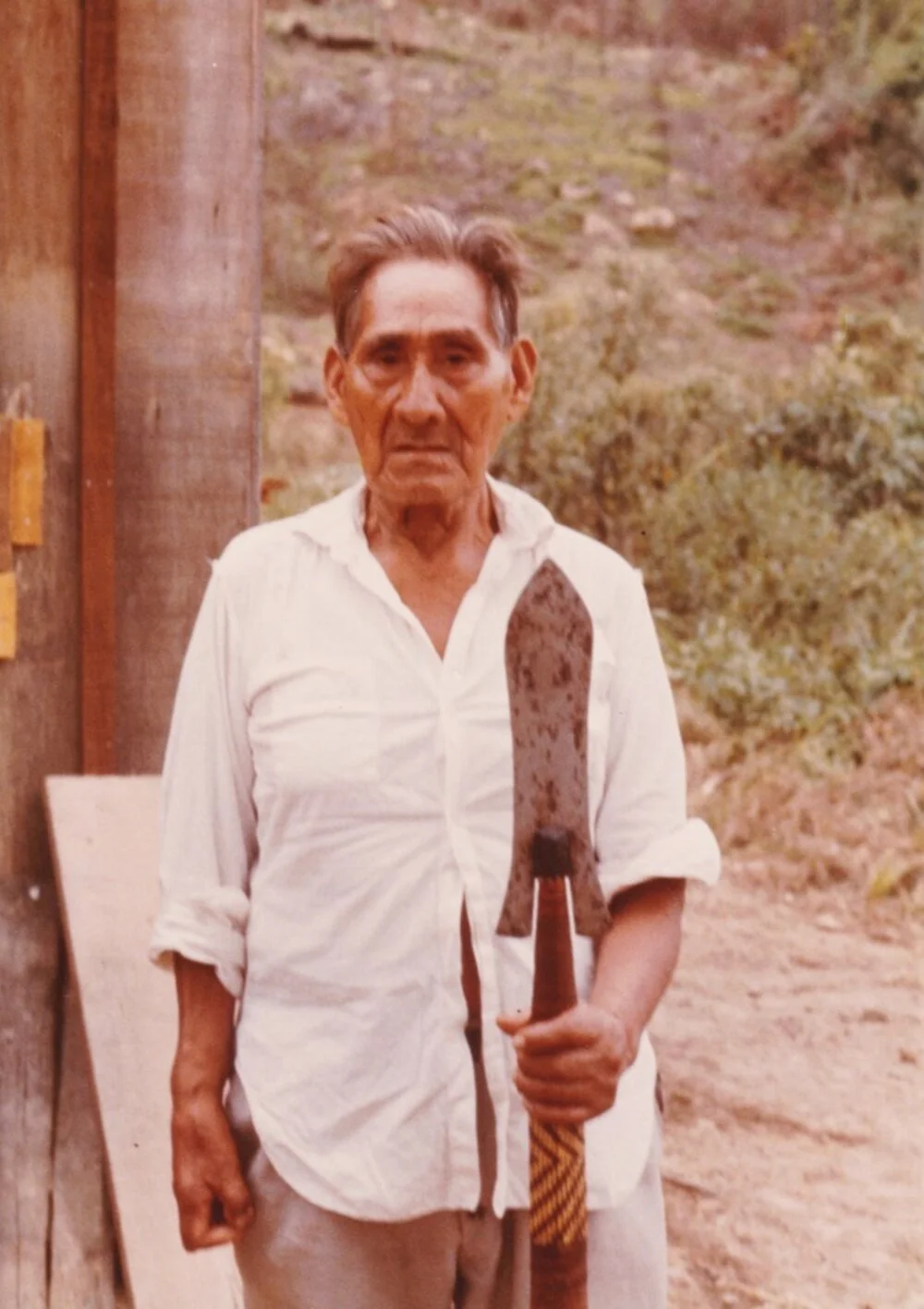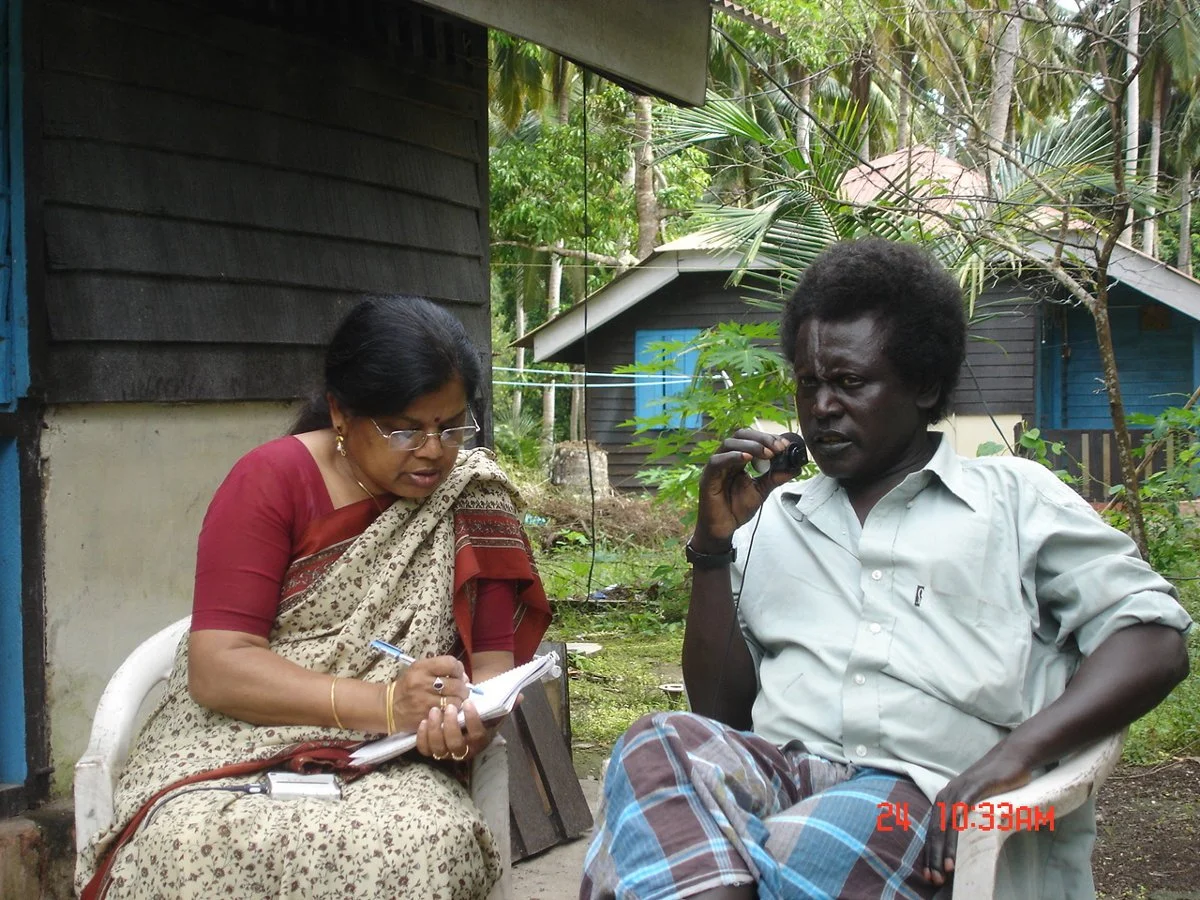STORIES
The Sadu People
Culture and Language in Brief
February 22, 2017
Xianming Xu and Bibo Bai
Research Centre for Endangered Languages, Yuxi Normal University
Reserve Maize in tree in winter by house
1. Location
The Sadu people live in three hamlets, with a total population of 1,505: Jaoyuan hamlet under the administrative jurisdiction of Beicheng Town, and Xincun and Dashuitang hamlets under the administrative jurisdiction of Chunhe Township in Hongta District of Yuxi Municipality in Yunnan Province, the People’s Republic of China.
2. Origin
The Sadu claim to a Bai minority origin, while also sharing certain aspects with the Yi, Hani, Lisu, Lahu, Bai and Han Chinese in the region. According to some records of the Chinese ethnic history, such as Huayangguozhi: The Annals of Middle South, Ethnography of Yuxi Region, The Annals of Yuxi City: The Annals of Jinning County, Place Names of Jinning County, the tribes of Southwest China all belonged to the Diqiang genealogy of the Pre-Qin period. In the Han and Jin dynasties, various ethnic groups of Southwest China descended from Diqiang genealogy, such as Bo, Kunming, Sou, Liao, Pu and so on. More divisions emerged later on, including Wuman or Baiman from the Kunming and Sou tribes in the Tang Dynasty. It was recorded that during the Southern Song Dynasty, the Samodu tribe broke away from Dali Kingdom. This tribe then migrated into the Dianchi Lake area which was occupied by descendants of the Wuman. Therefore the government has officially recognized the Sadu people as part of the Bai ethnic minority officially since the 1950s.
3. Culture
3.1 House Building Taboo
The Sadu observe traditional ceremonies and customs related to house building. Preparations for cutting building materials for pillars and crossbeams must take place only on auspicious days. According to the animal zodiac, if a house owner was born on the day of the rat, trees should not be felled on the day of the horse; if an owner was born on a sheep day, trees cannot be felled on a cattle day, and so on. A ritual Shamanist from neighboring Yi nationality group is invited to chant.
Li Lanzhen, Sadu story teller
3.2 Worshipping Dragon Festival
The Sadu people hold a Worshipping Dragon Festival every year on the 8th day of the first month of the Chinese Lunar calendar. At the festival, the chief shaman brings elders and villagers into the jungle for the ceremony. In the jungle, a sheep is sacrificed, and all participants kowtow to the village protector. The sheep meat is brought back to the public house together with pork, chickens, vegetables and liquor for a village feast. Some rich families and newly married couples contribute and donate food to the feast.
Li Fenqin, one of the Sadu Language consultants selecting dried tobacco leaves ready for selling
3.3 Coiling Thread Ceremony
The Sadu believe that the rainbow comes down for water on the fifth day of the fifth month of the Chinese Lunar calendar, potentially bringing sickness to the people. Thus on this day, the Sadu families hold a ceremony. The elders coil five-colored threads to the wrists to each other family member. The five-colored threads are a means to prevent rainbow sickness. Some families even coil the five-colored threads to their rice steamer.
3.4 Calling Soul Ceremony
On the 25th day of the sixth month, the Sadu people call back the souls of their family members. At this ceremony, the elders chant, “Cut off no gold and silver, cut off no descendants, cut off no food and clothing. But cut off all disasters, cut off all sicknesses and pains.” Immediately following the chant, they must cut the five-colored threads off their wrists with scissors.
3.5 Tomb-Sweeping and Ancestor Worship
On the Day of Qingming Season, Tomb-Sweeping Day, and the 15th of the seventh month, the Sadu people make offerings to their ancestors. They clean the ancestral graveyard, offer cooked food and wine, light incense, burn false money, and pray at their ancestors’ altars and tombs.
3.6 Marriage Customs
The Sadu people enjoy true freedom in how they choose their spouses and they practice monogamous marriages. Before a wedding happens, three visits and negotiations must take place, initiated by the groom’s family. If a young man loves a young lady, his parents invite a matchmaker to propose marriage to the girl’s parents, offering them one kilogram of brown sugar as gift. If the lady’s parents agree, they accept the gift. Next, the young man’s family prepares hand woven cloth, more brown sugar and some money to offer the girl’s parents for a formal marriage engagement. On the occasion of the third visit, the young man’s family prepares two chickens, some rice, liquor, and vegetables for a feast known as the “killing chicken meal.” At the wedding ceremony, the bride’s eldest brother carries her out of the family house to the bridegroom and the fetching-bride team. If the bride’s family has a horse, the bride rides the horse. The fetching- bride team beats drums and gongs to start their wedding trip.
3.7 Funeral Customs
When an elder dies, his daughter covers his face with a “covering-face cloth.” A torch is set outside the house gate, and the deceased is dressed in funeral clothes. A Yi shaman is invited to chant for the deceased. Relatives and friends gather to mourn and offer sacrificial food. A troupe of dancers, drummers and suona players are invited inside to perform before the coffin. The mourners and family members pray and take their meals by the coffin. The family must check the coffin to make sure it is secure before it is carried to the family graveyard for burial. A clay pot of clean water covered with a stone is placed on the tomb. The next day, the family returns to the tomb with the band of suona players, as part of a ritual called “fushan” where they check and mend the tomb. With the suona playing “Fushan Melody,” the daughters and sons-in-law burn incense, and plant grasses and trees on the tomb. All attendees pray for the mountain spirits to comfort and console the dead, and to bless and bring fortune and peace to the living.
3.8 Taboo
The Sadu do not visit each other on New Year’s Eve. They must stay home to guard the house. If a neighbor’s pet happens to wander in, the home owner must make a small cut on its ear with scissors to dispel the back luck. If a death occurs outside the village, it is not permitted to bring the body into the village. Funeral ceremonies or burial in the family graveyard are also forbidden. Whistling at home is also forbidden. It is believed that whistling in the daytime dispels good fortune, while whistling at night attracts ghost into the home. Dirty jokes, rude remarks, and farting are forbidden in the presence of elders. Musical instruments cannot be played at home, only in public places. No one is allowed to chop down trees in the village ritual jungle. No one is allowed to bring pangolins into their homes, since tradition holds they are dragons. It is forbidden to cook dog meat or snake meat in the home.
3.9 Religion
The Sadu worship nature and ancestor spirits. Before 1949, there were Guandi Temples in their villages where they worshiped Buddhist icons, burned incense and prayed. Each year, the villagers make three ritual worship offerings. The first is on the New Year’s Eve in the lunar calendar. On this occasion, each family takes a big plate with pig head and first offers food to mountain spirit, then to the water and cattle spirits, and finally to the home ancestor spirits. The second ritual offering takes place on the third day of the first month. The offered foods are the same, but the order is reversed, so that the first offering is to the ancestors, then to cattle spirit, dragon spirit and mountain spirits. The third offering takes place on the 8th day of the first month. On this occasion, the village chiefs and elders bring the villagers to the ritual jungle to sacrifice sheep, pray to the mountain spirits and dragon spirit at the well, and then the villagers meet at the public house for a feast.
4. Language
The Sadu language is part of the Yi language branch of the Tibeto-Burman family in the Sino-Tibetan phylum, which is parallel to Nisu Yi, Hani, Lisu, Lahu, etc. It is a typical tonal language. Syntactically, subject, object and predicate form its sentence segment orders. The Sadu people use their mother tongue to express their world, their traditional knowledge and ways of life. They live in a cool climate with a Karst topography where water sources are scarce. Water is so important to the Sadu that their word for “food” is “tshɯ²¹ʑi²¹” which literally means “edible and drinkable substances,” the word for “rainbow (“va³³ mo²¹ ɕi³³”) literally means as “sow urine,” and the smallest bird in their region, which is about the size of a grasshopper, is called “μα313τσα55τσα55μo21σ55σ55ζo33” which literally means “grasshopper’s mother’s baby.” They have a rich knowledge of local plants, including various pine trees which will not be described here.
Here are some sample sentences:
ŋo²¹ nu³³ sa⁵⁵du⁴²pho³¹³ ŋɛ³¹³ ɛ⁵⁵.
我 话助 撒都人 是 语助
I TOPT Sadu person be MPT
我是撒都人。
I am Sadu.
ŋo²¹ nu³³ li³³lɛ⁵⁵mo²¹ ŋɛ³¹³ ɛ⁵⁵.
我 话助 椒园人 是 语助
I TOPT Jiaoyuan villager be MPT
我是椒园村人。
I am from the Jiaoyuan Village.
ŋo²¹ me³¹³ ne⁵⁵ li³³ ʑɔ⁴² ɯ²¹ ɛ⁵⁵. tɕhi⁵⁵khu⁴² tshu⁴² tɕhi²¹ khu⁴². ua³¹³dzɛ³³ tsho²¹mo³³ɡəɻ⁴²
我
话助 李 荣 叫 语助 今年 六 十 岁 从前 老人
I name TOPT Li Rong call MPT this year sixty year long ago old people
我的名字叫李荣。今年60岁。
My name is called Li Rong. I am sixty years old this year.
ɡɯ⁵⁵ tshua⁴²tshe²¹ lɛ²¹ ɕi³³ɡɛ²¹ ba⁵⁵dʑi³³ te²¹dze⁴² ȵi²¹ sə³³ kui³³ ɡuəɻ⁴².
施助 传承 来 这样 话语 一些 二 三 句 说
AGPT transmit come those words some two three word tell
我来讲几句从前老人们传承下来的古话。
I would like to tell you a few sentences transmitted by the old people.
bɯ²¹ ʔũ³³ nu³³ ʑi²¹dʑa⁵⁵ kə³¹³,tɕhi⁵⁵ ʔũ³³ nu³³ tshɛ⁴²pə⁴² kə³¹³.
山 高话助水 隔 气 高 话助 财富 隔
mount. high TOPT water block temper high TOPT fortune block
山高隔水,气高隔财。
High mountains block water. Bad temple blocks your fortune (Proverbs).
From left Bai Bibo, and Sadu language consultant, Li Rong, Li Hou (passed away) and Li Changshou
CONTINUE READING STORIES





















